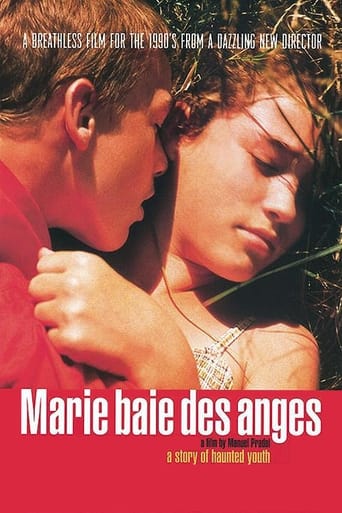

This is truly a film about what it is like to be a teenager. Nothing is trivialized and none of the characters are "heroes." The protagonist is only that because she is the most interesting and accurate depiction of how a teenager sees life. These children have grown up quickly and at the age of fourteen, they view life with the skepticism of adults but lack the wisdom and the compassion that age garners. To say they are shallow and self-absorbed is a cop-out. Of course they are. That's the point. They see that they have matured physically but fail to realize they are still essentially children psychologically. They are eager to test out their newfound independence and their roles as young adults, particularly with sex. Marie realizes that she can use her body to get what she wants from some of the naval men in the area, but she is still too young to understand the price she is paying for their gifts. Orso has been picking pockets and burglarizing homes for some time and decides to up the ante with by packing a pistol. Their love is not the mature and caring relationship. They are in love the way every teenager is, that is to say that they think they are and with their hormones pounding, who's to say they're wrong. Similar to Kids or Gummo, the film to which it has been likened, Marie Baie des Anges shows the teenage years as a critical period in life. A teenager is still afflicted with the rashness of youth, but their actions suddenly have life-altering consequences.
... View MoreThis movie promises much but delivers only beautiful scenery of the southern France. We were expecting something along the line of "The Blue Lagoon" spiced with French subtlety, but received a chaotic cocktail of random scenes from the life of a group of disturbed kids. The director was desperately trying to make an artistic movie, but had nothing to say. Everything here is forced, dialogs are stale, the characters' motivations are nonsensical. The only thing the movie has going for it is the beautiful scenery and good camera work.
... View MoreAfter seeing this movie, I want to view other French movies. They have a unique style of production that is more visual art than plot. Mixing up the time lines detracted from the story. Some characters didn't fit into the story very well. Marie (Vahina Gioconte) oozed sensuality and moodiness. Without her, the story would have been meaningless. Do young people really live like this? Ignore my spelling errors please.
... View More'Marie Baie des Anges' is a gorgeous and tragic film. It's the story of two young people caught in a drain of circumstances, destined to meet at the bottom. Hope is not to be found anywhere for these two except in each other. It takes sacrificing everything for them to see that.This movie truly touched me. There is rarely a "happily ever after" in life, and this film is a sock in the face to those who believe that there is. Disaster follows these two very closely, even at the height of their love.This is one of those movies that sinks in slowly, but sinks in very deep. Halfway through, you'll be bored, and want to shut it off. Don't do it. Watch the entire film (in one sitting), and it will stick with you for the rest of your days.10/10
... View More